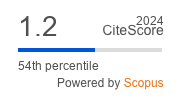The Power of First Impression: Evaluating the Stopping, Sticking, and Striking Effects in Skeuomorphic Interfaces for Middle-Aged Chinese Users
DOI:
https://doi.org/10.52152/22.3.27-46(2024)Abstract
Nowadays, AI reconstructs the human lifestyle. Smart devices are no longer cold machines but 24-hour standby "life assistants" in people's pockets. According to the 55th Statistical Report on the Development of the Internet in China, the number of Internet users in China had reached 1.108 billion by December 2024. And the Internet penetration rate had risen to 78.6%. This means that user interface (UI) design has a huge potential market in China. With the high popularity of digital products, the first impression of the user interface (UI) plays a pivotal role in the user experience. Norman's emotional design theory focuses on emotional interaction between human and products. He defines the emotional design as three levels: visceral, behavioral, and reflective. In the digital era, interface design should consider users’ emotions to enhance human-computer interaction (HCI). This study, based on Norman’s emotional theory, investigates the influence of skeuomorphic aesthetics for middle-aged Chinese users on visceral appeal. On the visceral level, the aesthetic appeal of user interface (UI) can trigger emotional resonance and create a strong first impression, thereby effectively constructing users' loyalty toward a digital product. The initial presentation of visual effects, sound cues, and material texture can directly affect the user's preference and trust in the product. UI designers widely employ skeuomorphic design as a design style. This is because it draws on the appearance and texture of real objects and can arouse users' association with the real world. However, compared with flat design, there is still debate about whether skeuomorphic design can attract strong interest from specific user groups on a visceral level. In China's Internet environment, middle-aged users are immigrants in the digital age. Their aesthetic level and user habits differ from the young generation, who are digital natives. The preference of middle-aged Chinese users for skeuomorphic design has not been fully studied. This study aims to explore the influence of aesthetic elements on skeuomorphic UI design for middle-aged Chinese users. Meanwhile, the identification of UI symbols from middle-aged Chinese users is also revealed in this research.
Downloads
Published
Issue
Section
License
Copyright (c) 2024 Lex localis - Journal of Local Self-Government

This work is licensed under a Creative Commons Attribution-NonCommercial-NoDerivatives 4.0 International License.








